Behnam Kamranian
ArchBERT: Bi-Modal Understanding of Neural Architectures and Natural Languages
Oct 26, 2023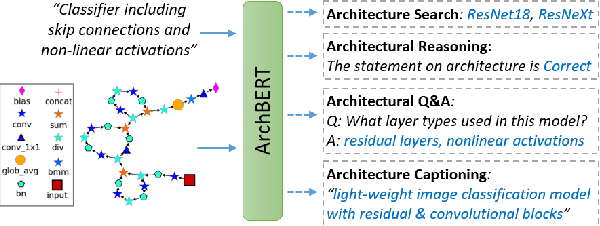


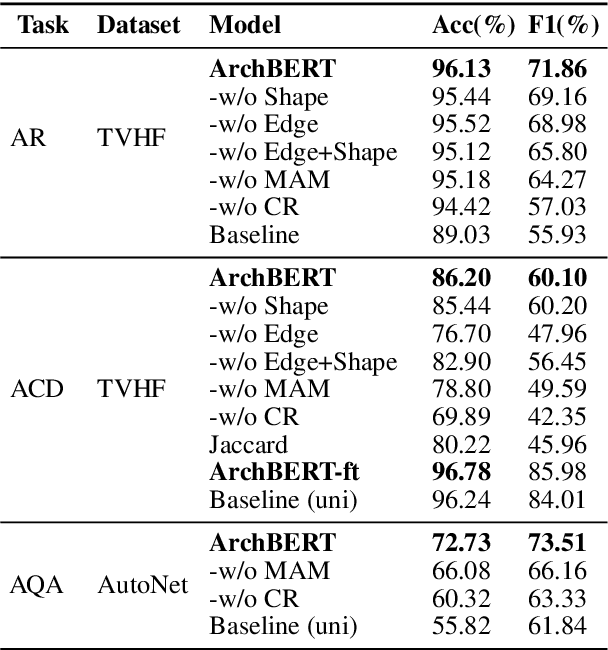
Abstract:Building multi-modal language models has been a trend in the recent years, where additional modalities such as image, video, speech, etc. are jointly learned along with natural languages (i.e., textual information). Despite the success of these multi-modal language models with different modalities, there is no existing solution for neural network architectures and natural languages. Providing neural architectural information as a new modality allows us to provide fast architecture-2-text and text-2-architecture retrieval/generation services on the cloud with a single inference. Such solution is valuable in terms of helping beginner and intermediate ML users to come up with better neural architectures or AutoML approaches with a simple text query. In this paper, we propose ArchBERT, a bi-modal model for joint learning and understanding of neural architectures and natural languages, which opens up new avenues for research in this area. We also introduce a pre-training strategy named Masked Architecture Modeling (MAM) for a more generalized joint learning. Moreover, we introduce and publicly release two new bi-modal datasets for training and validating our methods. The ArchBERT's performance is verified through a set of numerical experiments on different downstream tasks such as architecture-oriented reasoning, question answering, and captioning (summarization). Datasets, codes, and demos are available supplementary materials.
ETran: Energy-Based Transferability Estimation
Aug 03, 2023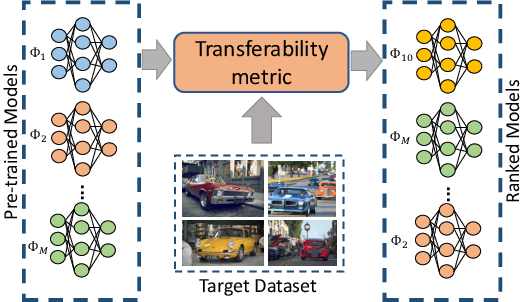
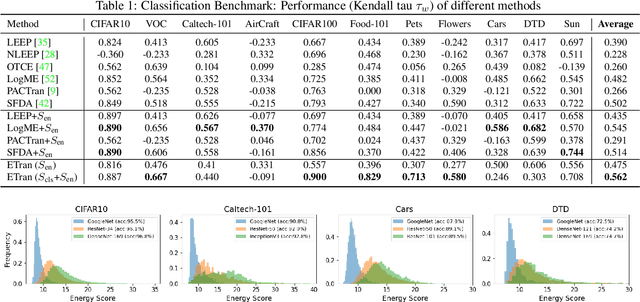

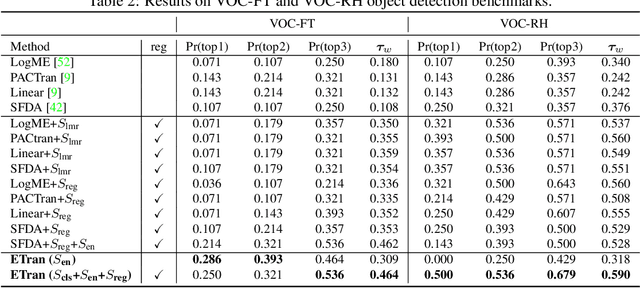
Abstract:This paper addresses the problem of ranking pre-trained models for object detection and image classification. Selecting the best pre-trained model by fine-tuning is an expensive and time-consuming task. Previous works have proposed transferability estimation based on features extracted by the pre-trained models. We argue that quantifying whether the target dataset is in-distribution (IND) or out-of-distribution (OOD) for the pre-trained model is an important factor in the transferability estimation. To this end, we propose ETran, an energy-based transferability assessment metric, which includes three scores: 1) energy score, 2) classification score, and 3) regression score. We use energy-based models to determine whether the target dataset is OOD or IND for the pre-trained model. In contrast to the prior works, ETran is applicable to a wide range of tasks including classification, regression, and object detection (classification+regression). This is the first work that proposes transferability estimation for object detection task. Our extensive experiments on four benchmarks and two tasks show that ETran outperforms previous works on object detection and classification benchmarks by an average of 21% and 12%, respectively, and achieves SOTA in transferability assessment.
 Add to Chrome
Add to Chrome Add to Firefox
Add to Firefox Add to Edge
Add to Edge